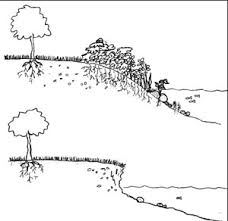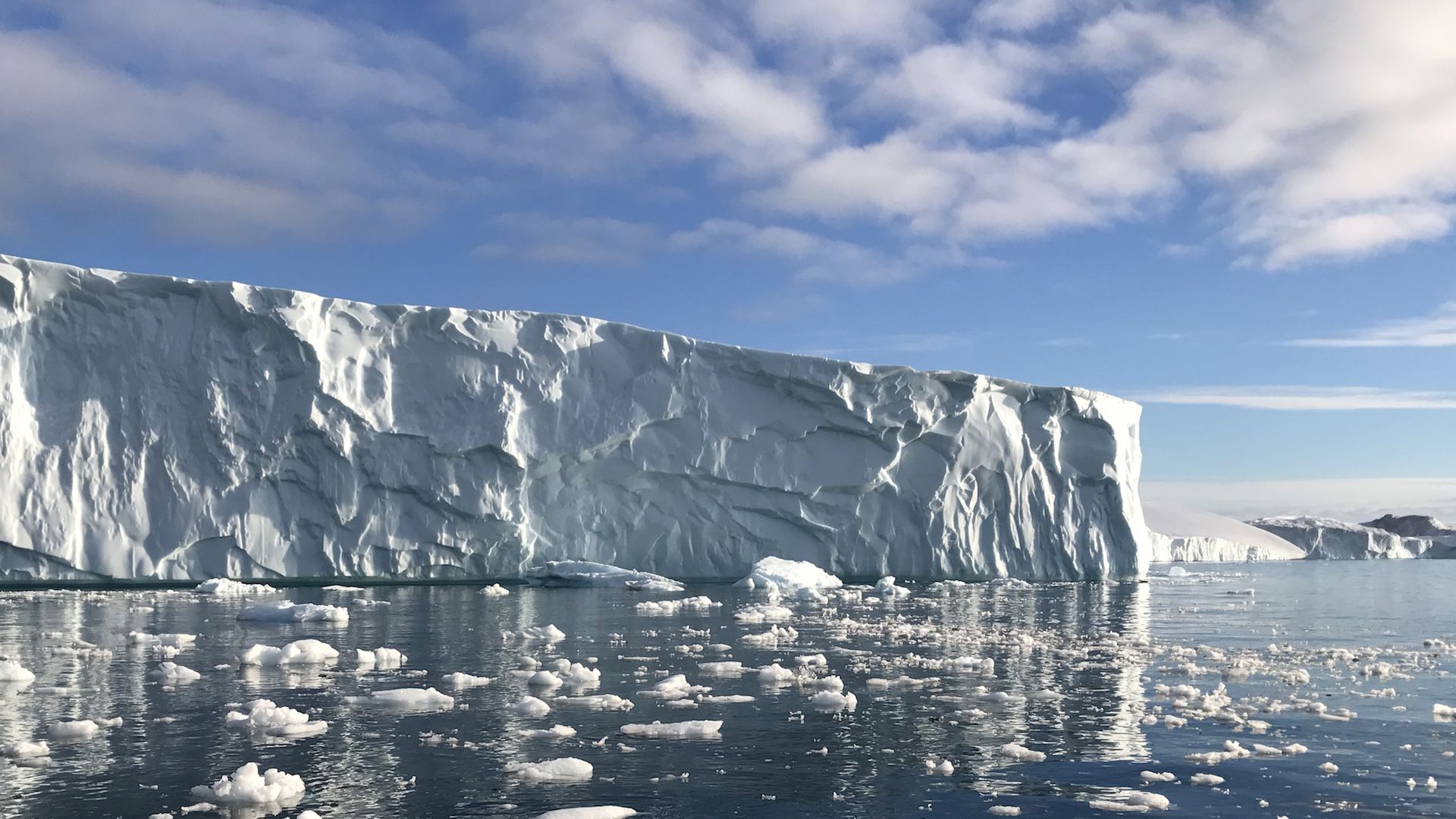What is a human intervention to prevent the destructive process flooding?
a. Building a river.
b. Building a dam.
c. Building an asphalt parking lot.
b. Building a dam.
Slightly hilly farmland is plowed in curves, called contour plowing, rather than straight lines. Which is the best reason for why this type of plowing is done?
a. To make farmland pretty
b. To keep topsoil in place
c. To increase safety of farmers
d. To reduce pests
b. To keep the topsoil in place
What item is placed along rivers to control flooding?
a. Levee
b. Storm drain
c. Dam
d. Both A and C
a. Levee
Which process results in the Earth's surfaces being built up?
a. earthquakes
b. hurricanes
c. deposition
d. floods
c. depostion
As magma, or molten rock, pushes up through Earth's surface, ___________ are formed.
a. earthquakes
b. faults
c. lava
d. volcanoes
d. volcanoes
Mrs. Carlisle placed some peppermints into a glass jar. She shook the jar and then dumped the contents onto a plate. She noticed the peppermint pieces slide down the pile. Which destructive process is similar to the shaking of the peppermints in the glass jar?
a. deposition b. erosion c. weathering
c. weathering
Sand dunes are hills of sand in deserts and along seashores. What are sand dunes the result of?
a. Erosion
b. Pollution
c. Deposition
d. Weathering
c. Deposition
When a volcano erupts the lava that is released from it can cause a lot of damage as it flows. The lava also will harden and form new land, bringing rich soil for farming. Is a volcano an example of a constructive or destructive force?
a. Constructive force
b. Destructive force
c. Both A and B
d. Neither A nor B
c. Both A and B
What are four causes of weathering?
a. Water, wind, ice, plant roots.
b. Concrete, soil, wind, erosion
c. Trees, soil, plants, glaciers
a. Water, wind, ice, plant roots.
Why is beach nourishment, pumping sand onto beaches, necessary?
a. Sand on beaches weathers away.
b. Sand piles too high on sand dunes.
c. Waves erode the sand.
d. Clean sand replaces dirty sand.
c. Waves erode the sand.
Which is the process of rocks breaking down and wearing away over time?
a. Melting
b. Sedimentation
c. Deposition
d. Weathering
d. Weathering
How does moving water cause weathering?
a. It knocks rocks into other rocks.
b. It expands and causes cracks in the rocks.
c. It grows through cracks and breaks the rock apart.
a. It knocks rocks into other rocks.
Where do earthquakes happen?
a. In the ocean.
b. At the fault lines on plate boundaries.
c. In the mountains.
b. At the fault lines on plate boundaries.
What is the Earth's outer layer called?
a. Crust
b. Land
c. Atmosphere
d. Sky
a. Crust

What caused the change in the photo above?
a. humidity b. contour plowing c. erosion
c. erosion
Earth's surface has been changed by fast-moving water. Which example shows this?
a. Canyon
b. Lake
c. Volcano
d. Earthquake
a. Canyon
What is a valley?
a. A large area of land.
b. Land with water on 3 sides.
c. Land between mountains or hills.
d. Large mass of ice.
c. Land between mountains or hills.
Why do farmers use terracing?
a. To prevent the loss of plants
b. To grow crops in cold weather
c. To stop soil erosion
d. To help move soil
c. To stop soil erosion
Landforms are constantly ______ ?
a. Staying the same
b. Changing
c. Destroyed
b. Changing
A _____________ is a system of underground pipes used to control flooding by moving the water away from homes, businesses or towns.
a. floodways
b. storm drains
c. dams
b. storm drains
 What are dams used for?
What are dams used for?
a. To help control floods.
b. To detect earthquakes.
c. To prevent erosion.
d. To detect seismic activity.
a. To help control floods.
Deposits made at the mouth of a river are created by a constructive force called deposition. These deposits help form which surface feature?
a. sand dune
b. delta
c. glaciers
b. delta
A river creating a valley is an example of what?
a. A landslide c. Constructive force
b. A sinkhole d. Weathering and Erosion
d. Weathering and Erosion

What is this an example of?
a. Peninsula c. Glacier
b. Plateau d. Plain
c. Glacier
Which is a sudden movement of the earth as a result of volcanic activity or tectonic plates sliding past each other at faults?
a. Glacier
b. Earthquake
c. Flooding
d. Weathering
b. Earthquake